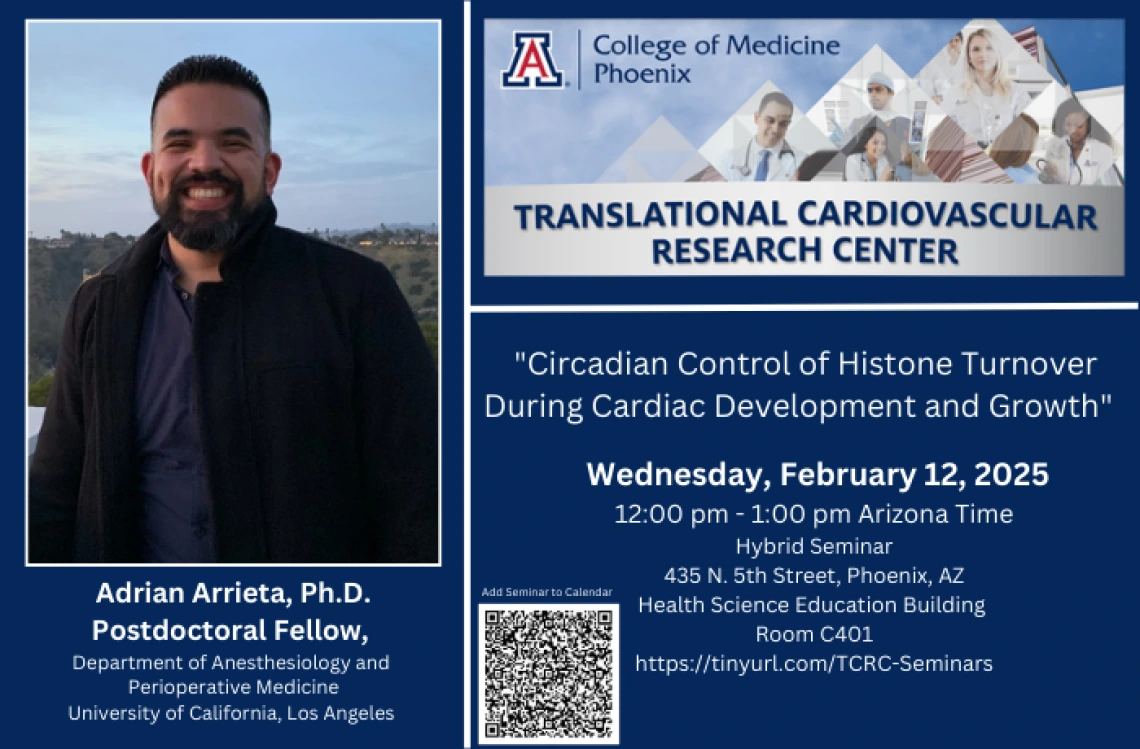College of Medicine – Phoenix, Translational Cardiovascular Research Center - Seminars

When
“Circadian Control of Histone Turnover During Cardiac Development and Growth”
TCRC SEMINAR SERIES, a monthly seminar series covering diverse topics in translational cardiovascular research welcomes.
Where
Health Science Education Building, Room C401
435 N. 5th St., Phoenix, AZ
Or
Presenter details
Adrian Arrieta, PhD
Postdoctoral fellow in the Department of Anesthesiology & Perioperative Medicine
University of California, Los Angeles
Abstract
The molecular clock operates at the cell and organ level, underpinned by a subcellular network of transcriptional and protein circuits. Circadian rhythms participate in heart disease: altered circadian biology is associated with cardiac arrythmias, myocardial infarction, hypertension and diabetes. Clock and Bmal1 are basic helix-loop-helix transcription factors that promote transcription of a set of “clock-controlled” genes, including Cryptochrome and Period. In addition to transcriptional cycling, many intermediate steps controlling protein abundance have been shown to oscillate, including splicing, mRNA degradation, translation, protein degradation, and, more recently, nucleosome deposition on chromatin. Our recent work supports the notion that α-adrenergic signaling, a critical driver of cardiac growth and contractility, is an initiating stimulus of histone turnover-dependent transcriptional remodeling of clock-controlled genes critical to myocyte hypertrophy. In our ongoing work, we seek to understand whether and how the circadian clock orchestrates early neonatal myocyte maturation, including the transition from hyperplastic to hypertrophic growth and exit from the cell cycle, by remodeling chromatin.

